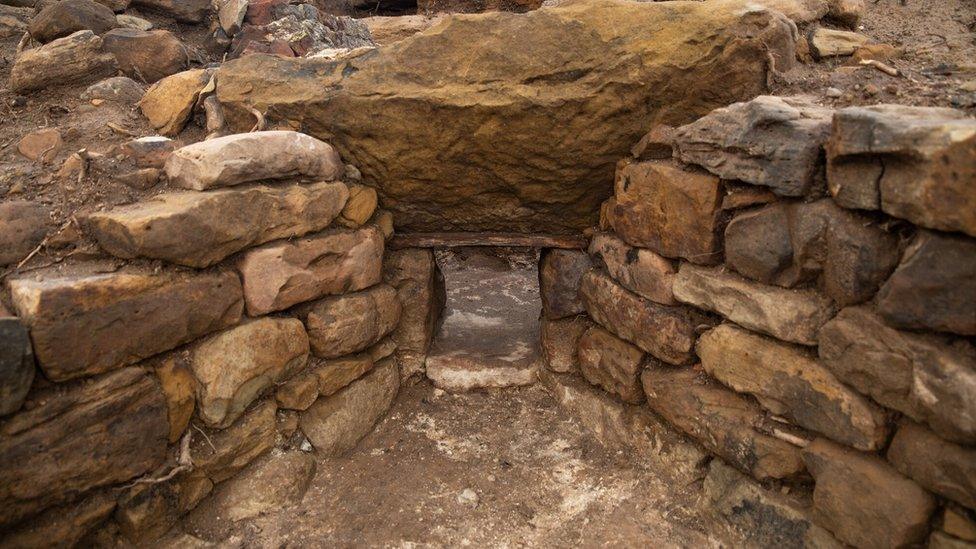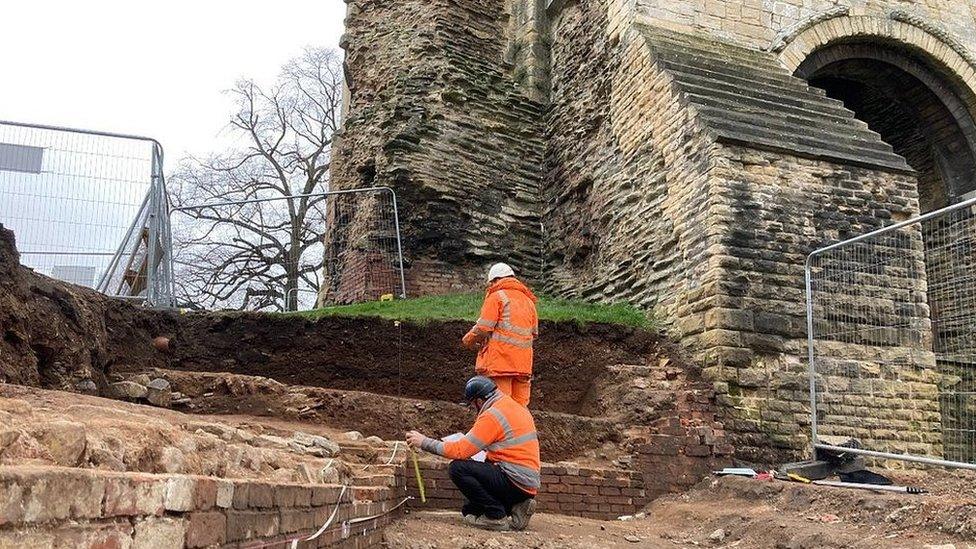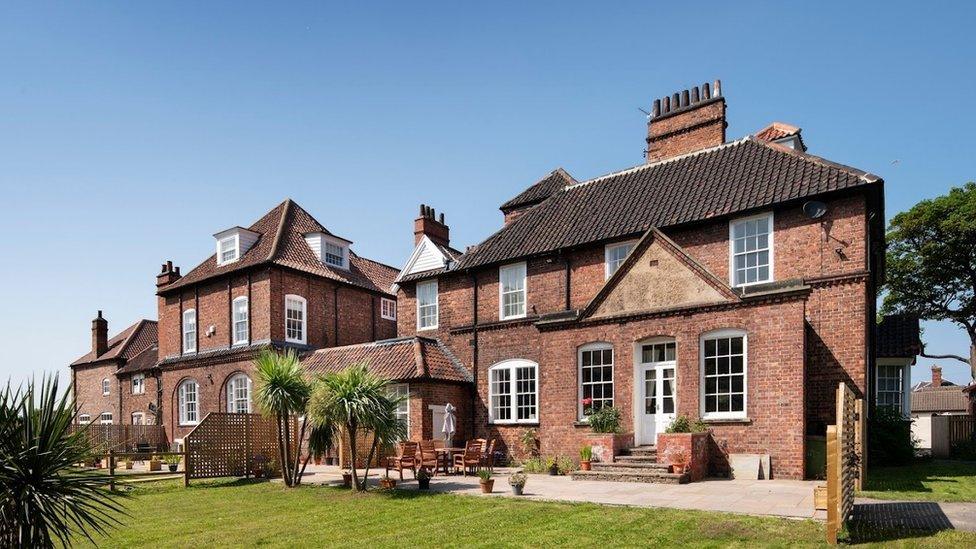Historic lime kiln discovered on North York Moors
- Published

The kiln would have been used to produce lime to improve the local farmland
A lime kiln dating from the 1700s has been unearthed under an "unsightly heap" in the corner of a North York Moors field.
The historic oven would have been use to produce lime to improve the local farmland after being transported from a nearby quarry.
The "well-preserved" discovery included the main firing chamber, handmade bricks and a stokehole, said experts.
Landowner Elaine Newham said she was "delighted" the kiln had been found.
Its discovery followed a collaboration between Mrs Newham, the National Park Authority, external and a local archaeology company.
She said: "It was completely neglected and was just a heap of earth covered in discarded stones, bushes and nettles.
"It was marked on an old map as a kiln so we knew that's what had been there, but we had no idea if anything was left of it."
The North York Moors National Park, external provided a £12,000 grant towards the excavation work.
Located on the Scarborough edge of the North York Moors, the site is now undergoing a more in-depth investigation and experts hope the kiln can be restored as an "educational asset for the local community".
New trees have also been planted nearby to replace those removed at the start of the project.
Dave Arnott, Farming in Protected Landscapes Officer, said: "While lime kilns are not an unusual sight in the North York Moors landscape, they remain an important link to our agricultural and industrial past."
Stephen Timms, Director of Quercus Archaeology added: "I've been an archaeologist for 30 years and it never ceases to amaze me what is just under your feet.
"We weren't expecting to see such a well-preserved kiln under what looked like a big pile of rubble."

Follow BBC Yorkshire on Facebook, external, X (formerly Twitter), external and Instagram, external. Send your story ideas to yorkslincs.news@bbc.co.uk, external.
Related topics
- Published11 February 2024

- Published11 February 2024

- Published4 November 2021
